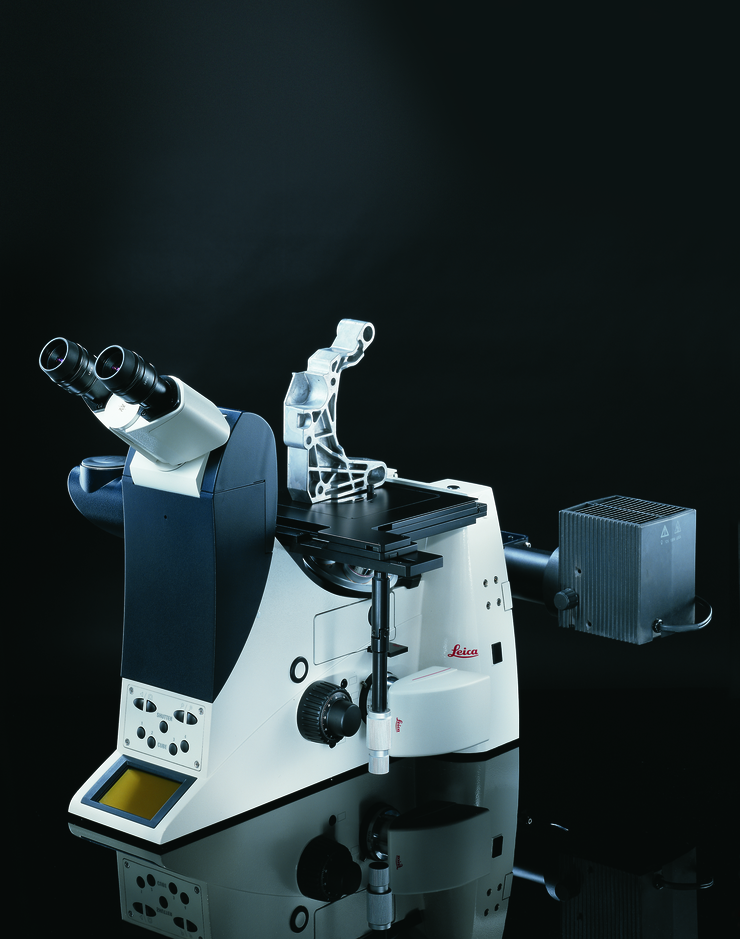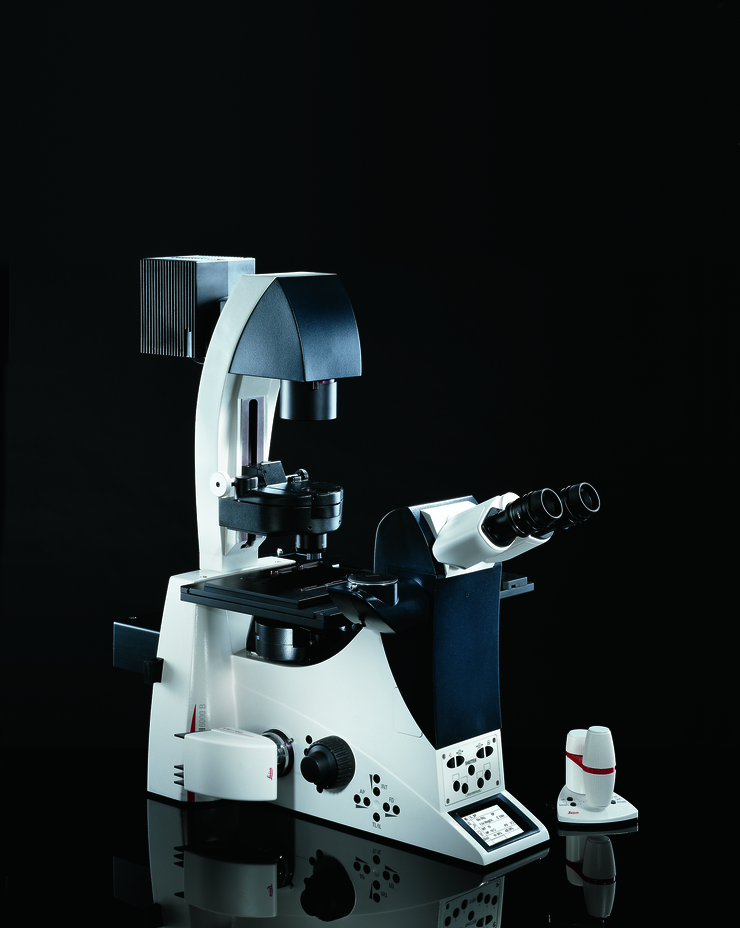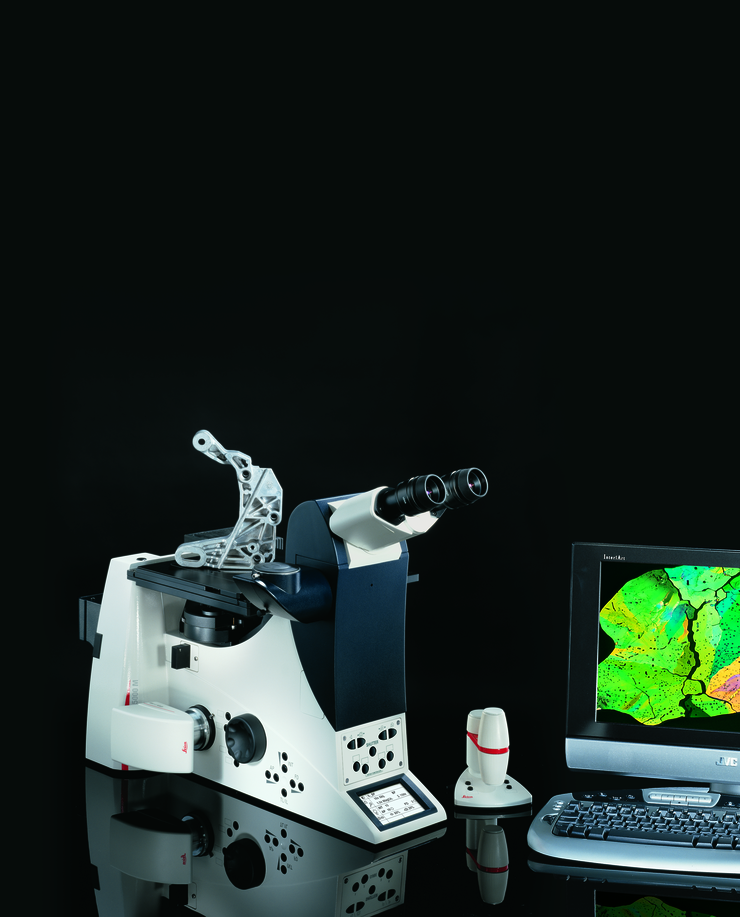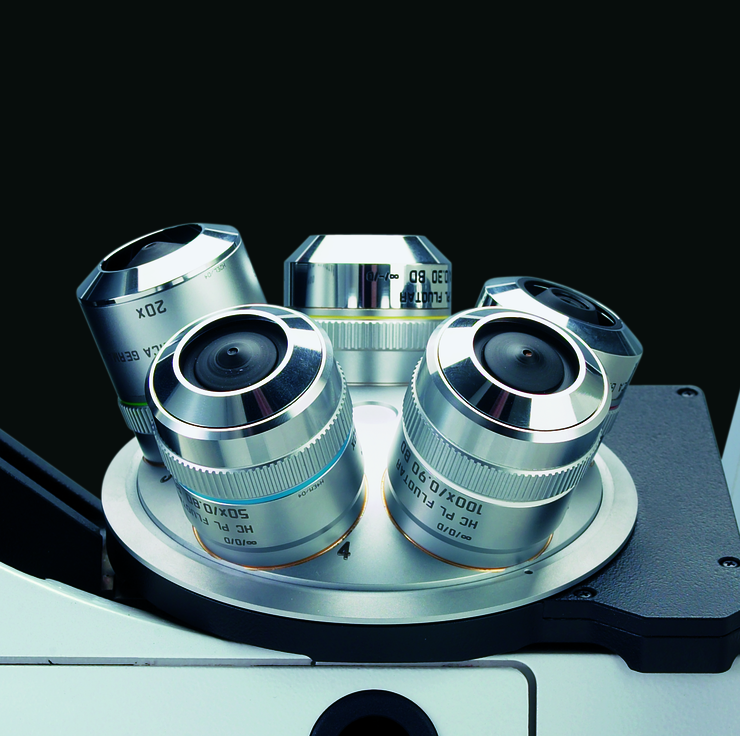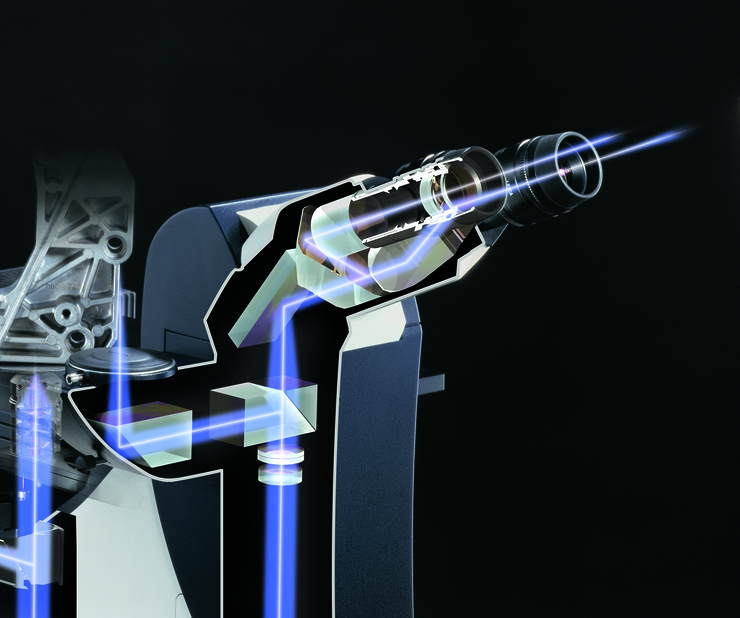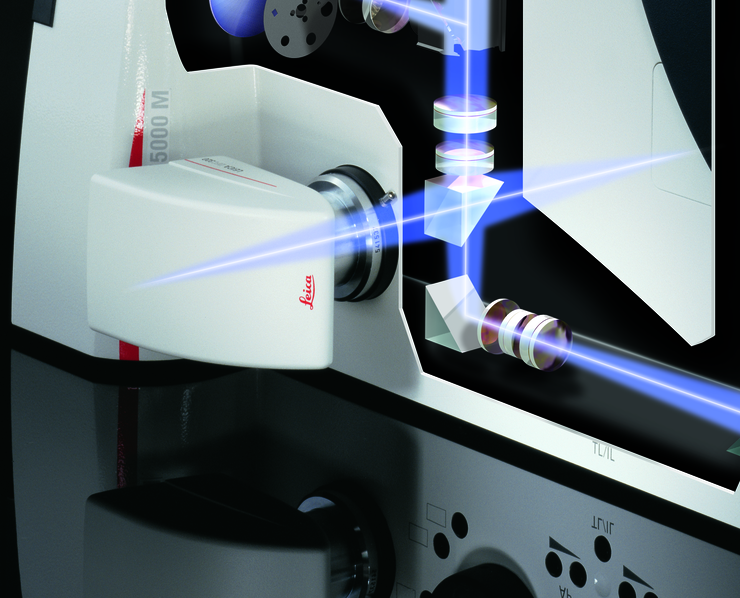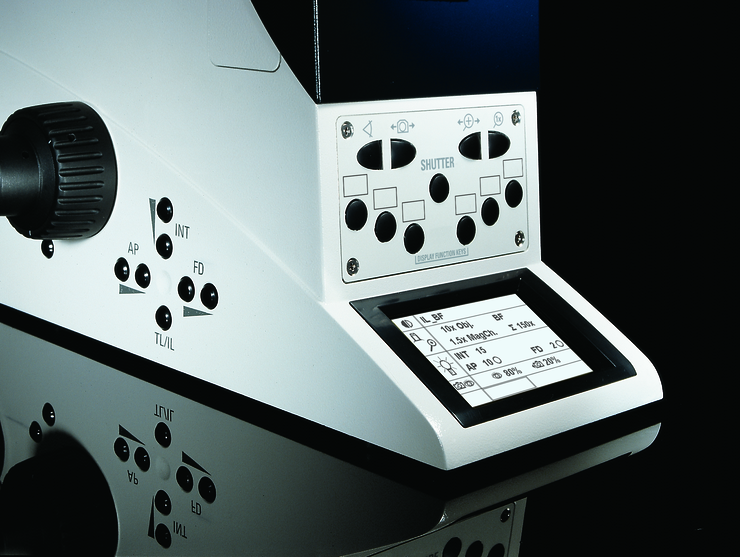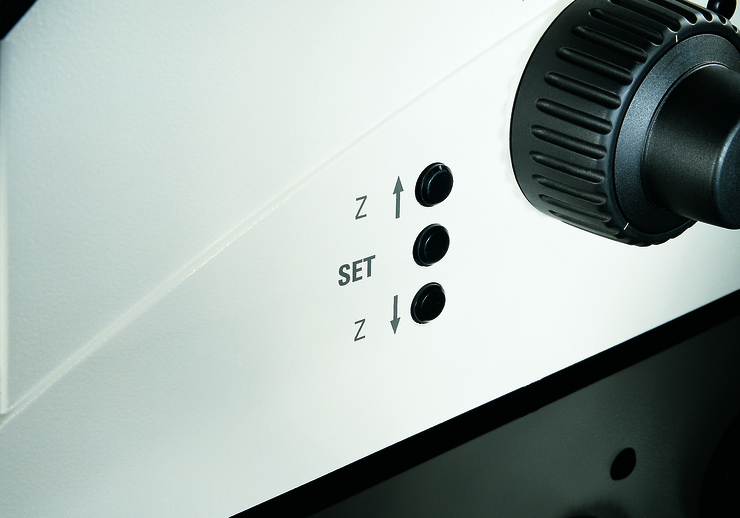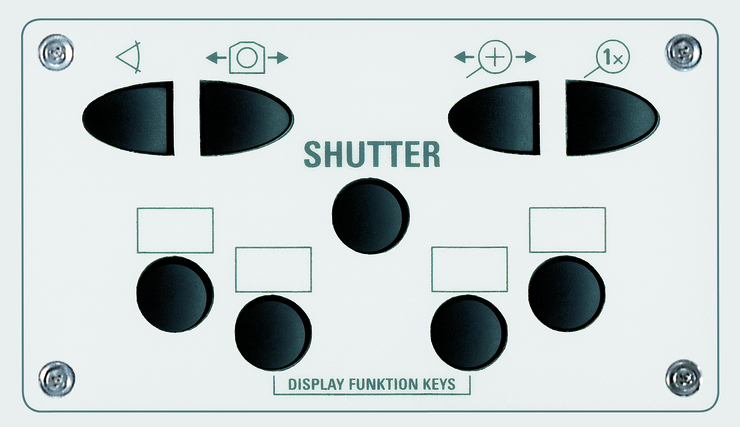DMI5000 M 可用于材料测试的倒置式研究显微镜
Add components with ease
Reflectors for contrast processes or fluorescence filters can be added through the access port. It opens at the touch of a button; the reflector can be replaced in seconds.
Leica DMI5000 M for reflected light and transmitted light examinations with manual stage, motorized objective turret, motorized focus and a DFC280 camera.
Examination for Steel Purity
A microscope system used for assessing the purity of steel must meet stringent requirements. The system illustrated here is a fully integrated solution: The Leica DFC280 digital camera, the DMI5000 M microscope and the "Steel-Expert" user software.
The motorized 5x objective turret
A touch of the button is enough to change the objective. The display shows the current objective magnification and the overall magnification immediately.
Mechanical camera output
The top camera port on the tube is mechanical. Switch settings are 0/100% or 100/0%.
Motorized camera outputs
A motorized disk with four positions that can be equipped to suit your individual requirement controls the two lateral ports. Beam splitters can be installed, which direct 100%, 80% or 50% of the light as desired to the left or right output port. All you need to do is touch a button to set it to the…
Status display
All current settings of the microscope at a glance: the current contrast process, selected magnification, specified lighting parameters, selected camera output and information on the focus level can all be read from the display.
The Focus Manager
The Focus Manager stores, manages and travels to two focal planes and is located on the right-hand side of the microscope. In addition to storing the focal plane, an additional lower level can be stored to ensure reliable objective changing, even with complex stage setups.
Clearly designed controls
The front control panel shows the most important functions. Every reflector cube can be directly controlled. Touch a button to open or close the shutter, switch the camera output or adjust the interim magnification of the specimen. Feedback is provided immediately on the display.
